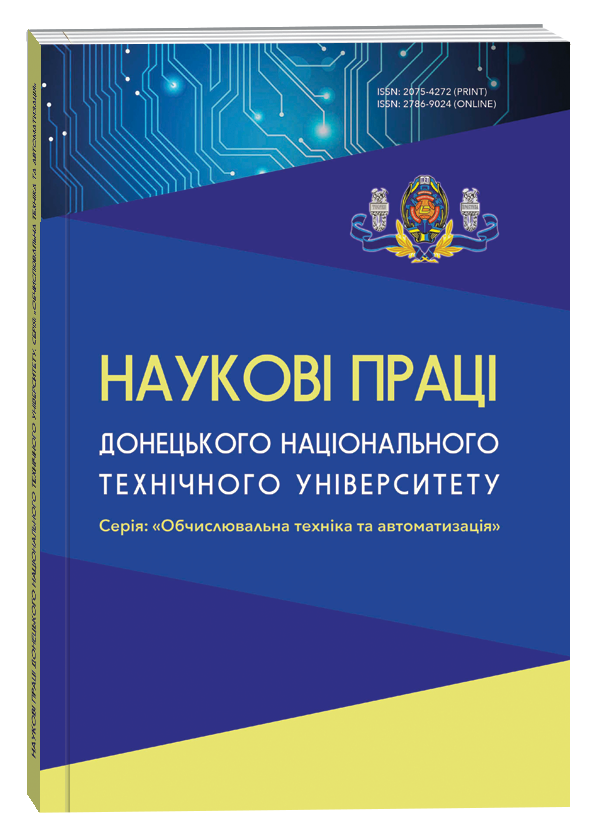EFFICIENT NEURAL NETWORK ALGORITHMS FOR MICROCONTROLLERS IN AUDIO DETECTION SYSTEMS
DOI:
https://doi.org/10.31474/2786-9024/v2i3(35).318543Keywords:
Drone detection, neural networks, microcontrollers, audio processing, real-time systems, edge computing, model optimization, quantization, energy efficiency, lightweight architecturesAbstract
This study focuses on the development and deployment of optimized neural network algorithms for real-time audio-based drone detection on resource-constrained microcontroller systems. Addressing the growing need for efficient drone detection, the research aims to design lightweight models that balance accuracy, low latency, and energy efficiency for edge devices such as STM32 and ESP32 microcontrollers.
The study evaluates neural network architectures, including Convolutional Neural Networks (CNNs), Recurrent Neural Networks (RNNs), and lightweight models like MobileNetV2 and TinyCNN. GRU-based RNNs achieved the highest accuracy of 98%, while MobileNetV2 offered a balance between performance and efficiency. Optimization techniques such as quantization and pruning were applied, enabling quantized MobileNetV2 to achieve inference speeds of 45 FPS and energy consumption of just 3 mW per inference. These results underscore the practicality of deploying such models in real-world scenarios.
Integration of these models onto microcontrollers was facilitated by frameworks like TensorFlow Lite and STM32Cube.AI. Field tests demonstrated the system’s robustness in diverse environments, including noisy urban areas. Detection accuracy exceeded 90% within a 100-meter range, even under adverse conditions. The results highlight the system’s potential for low-power, autonomous surveillance applications.
Key contributions include demonstrating the effectiveness of neural network optimization for edge systems, creating a scalable framework for audio-based detection, and advancing lightweight models for energy-efficient tasks. Future research will focus on advanced optimizations, expanding datasets, and integrating multi-modal detection.
This study lays a foundation for practical, efficient, and scalable drone detection technologies, addressing key challenges in energy use, accuracy, and real-world deployment.
References
E. Ragusa, T. Taccioli, A. Canepa, R. Zunino, and P. Gastaldo, "Design and Implementation of Tiny Deep Neural Networks for Landing Pad Detection on UAVs," IEEE Access, vol. 12, pp. 124009–124020, 2024. DOI: 10.1109/ACCESS.2024. 3454363.
Z. Zhang, M. A. P. Mahmud, and A. Kouzani, "FitNN: A Low-Resource FPGA-Based CNN Accelerator for Drones," IEEE Internet of Things Journal, vol. 9, pp. 21357–21369, 2022. DOI: 10.1109/JIOT.2022.3179016.
P.-E. Novac, G. B. Hacene, A. Pegatoquet, B. Miramond, and V. Gripon, "Quantization and Deployment of Deep Neural Networks on Microcontrollers," Sensors, vol. 21, 2021. DOI: 10.3390/s21092984.
H. Sun, J. Yang, J. Shen, D. Liang, L. Ning-zhong, and H. Zhou, "TIB-Net: Drone Detection Network With Tiny Iterative Backbone," IEEE Access, vol. 8, pp. 130697–130707, 2020. DOI: 10.1109/ACCESS.2020.3009518.
D. Utebayeva, L. Ilipbayeva, and E. Matson, "Practical Study of Recurrent Neural Networks for Efficient Real-Time Drone Sound Detection: A Review," Drones, vol. 7, no. 1, 2022. DOI: 10.3390/drones7010026.
S. Jeon, J. Shin, Y.-J. Lee, W.-H. Kim, Y. Kwon, and H.-Y. Yang, "Empirical Study of Drone Sound Detection in Real-Life Environment with Deep Neural Networks," in Proc. 25th European Signal Processing Conf. (EUSIPCO), 2017, pp. 1858–1862. DOI: 10.23919/eusipco.2017.8081531.
S. Al-Emadi, A. Al-Ali, and A. Al-Ali, "Audio-Based Drone Detection and Identification Using Deep Learning Techniques with Dataset Enhancement Through Generative Adversarial Networks," Sensors, vol. 21, 2021. DOI: 10.3390/s21154953.
C. Dumitrescu, M. Minea, and I. Costea, "Development of an Acoustic System for UAV Detection," Sensors, vol. 20, 2020. DOI: 10.3390/s20174870.
M. Meyer, L. Cavigelli, and L. Thiele, "Efficient Convolutional Neural Network for Audio Event Detection," ArXiv, 2017. [Online]. URL: https://arxiv.org/abs/1709.09888. Accessed: 22 Dec, 2024.
G. Cerutti, R. Prasad, A. Brutti, and E. Farella, "Compact Recurrent Neural Networks for Acoustic Event Detection on Low-Energy Low-Complexity Platforms," IEEE J. Sel. Topics Signal Process., vol. 14, pp. 654–664, 2020. DOI: 10.1109/JSTSP.2020.2969775.
A. Diouani, R. E. Hamdi, and M. Njah, "Assessing the Efficacy of TinyML Implementations on STM32 Microcontrollers: A Performance Evaluation Study," in Proc. 7th Int. Conf. Advanced Technologies, Signal and Image Processing (ATSIP), 2024, pp. 267–271. DOI: 10.1109/ATSIP62566.2024.10638900.
C. Contoli and E. Lattanzi, "A Study on the Application of TensorFlow Compression Techniques to Human Activity Recognition," IEEE Access, vol. 11, pp. 48046–48058, 2023. DOI: 10.1109/ACCESS.2023.3276438.
J. Rai, P. Carniglia, A. Dey, B. Balaji, S. Rajan, and S. Pant, "Lightweight Convolutional Neural Network-based Drone Detection Using Radar Spectrograms," in Proc. Int. Symp. Sensing and Instrumentation in 5G and IoT Era (ISSI), 2024, pp. 1–6. DOI: 10.1109/ISSI63632.2024.10720508.
Z. Zhang, M. A. P. Mahmud, and A. Kouzani, "FitNN: A Low-Resource FPGA-Based CNN Accelerator for Drones," IEEE Internet of Things Journal, vol. 9, pp. 21357–21369, 2022. DOI: 10.1109/JIOT.2022.3179016.
Downloads
Published
How to Cite
Issue
Section
License
Copyright (c) 2024 Сергій Колесник, Сергій Ковальов

This work is licensed under a Creative Commons Attribution-NonCommercial-NoDerivatives 4.0 International License.





